What Food Do Snails Eat?

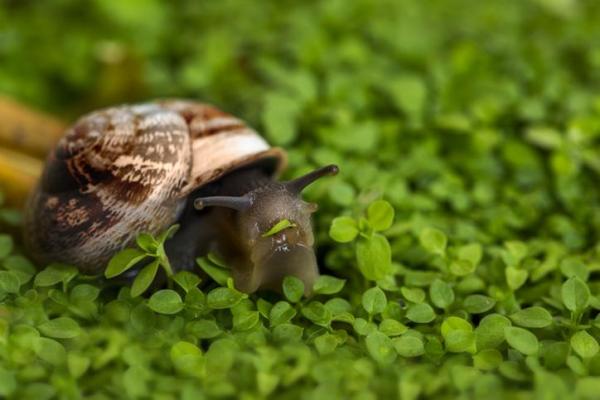
Many people overlook the existence of snails. They are small animals that move slowly in the garden or also found in marine environments. These mollusks are characterized by having a shell and leaving behind a kind of drool that they use to move.
How much do you know about them? Do snails have teeth? What are the different types of snails? What do snails eat? If you've asked yourself these questions, keep reading to know everything about snail feeding and more.
Types of snails
Before knowing what snails eat, you need to know the different types of snails that exist. They are classified according to the type of habitat in which they live:
Land snails
Land snails are characterized by using a kind of "mucus" or "slime" to move. This helps them climb up sloping or rough surfaces. In addition, they have a shell that covers most of their body, which allows them to hide from predators.
In addition, these types of snails have two pairs of retractable tentacles. The first pair of tentacles also carries their eyes. The second and lower set of tentacles works as olfactory organs to smell. Land snails are hermaphroditic, which means that they have both male and female sexual organs. Nevertheless, they cannot self-fertilize. They must copulate to reproduce.
Most types of land snails live up to a year. Others are known to live for two or three years. Lastly, there are some larger land snail species that are known to live over 10 years in the wild.
Freshwater snails
This type of mollusk has managed to colonize puddles, lakes, lagoons and rivers around the world. There are more than 4,000 species. Like land snails, freshwater snails are hermaphrodites. However, in their case they are able to fertilize their own eggs. The life expectancy of freshwater snails is approximately one year, but there are specimens that live up to five years.
Sea snails
These types of snails live in salty waters and are characterized by the presence of a large spirally wound shell, which has an opening that gives way to their white body. As for their taxonomy, they have similar characteristics to the other types of snails. However, they may have small differences in size or colors. A curious fact about sea snails is that their shell has been used since ancient times as a wind musical instrument, similar to a trumpet. There life span is about five years but in the wild they can live as long as 25 years.

Where do snails live?
As you have discovered, there are many types of snails distributed around the world. They inhabit different ecosystems, from areas with hot and desert climates, to high and cold mountain areas. Now, where do snails live exactly?
Land species usually live in areas populated by humans. They also live in forests and areas with lots of vegetation. It is easy to observe them on cloudy days or when the weather is moist. This is because they are sensitive to the sun's ray and must seek cover to combat desiccation. Contrary to belief, on those days they do remain active as they must move in search of food.
As for freshwater snails. they are found in rivers, lakes and lagoons around the world. They do, however, prefer warmer and wetter areas. It is very common to observe them near the rocks.
Meanwhile, sea snails inhabit oceans and seas around the world. There are species that live near the banks, while others prefer areas more than a thousand meters deep.
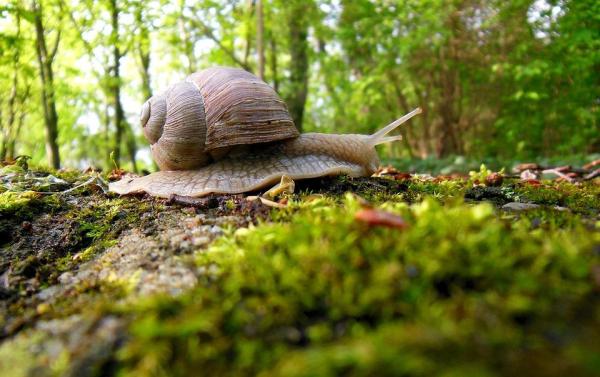
What do sea snails eat?
Like every living being, snails need to eat to survive. Marine species have a varied diet, so there are snails that are herbivorous animals, while others consume different species of animals, thus becoming omnivorous or carnivorous.
In general, snails eat plankton, a microscopic organism present in water. Other species ingest debris found in the seabed, while others consume algae or compounds from the rocks that are submerged, in addition to clams and sea sponges .
What do land snails eat?
Have you ever wondered what garden snails eat when you look at them between your plants? Here we have the answer.
The first thing you should know the snail's vision is quite poor, so they use smell to get their food. They are mostly herbivorous animals, so their diet consists of plant remains, pieces of fruit, soil and even bits of chalk in stones. These stones, such as limestone, are rich in calcium. This is an important component for a snail to be able to strengthen their shell and protect themselves from hazards.
Despite this, there are some types of land snails that are carnivorous and that even feed on smaller snails. These types of snails have a tongue that can bore holes into the shells of other snails, allowing them to reach the soft flesh inside.
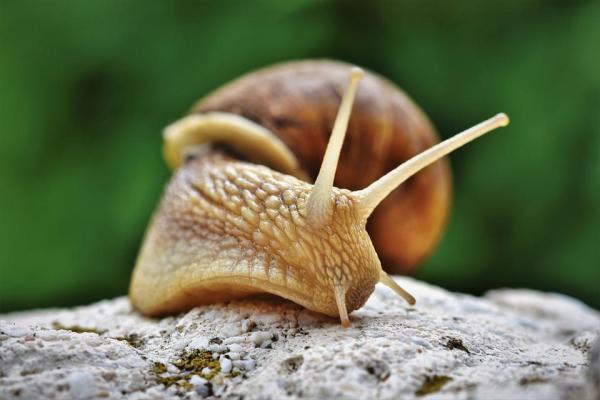
What do freshwater snails eat?
Following the feeding of snails, you should know what aquarium snails eat . The objective, both in home aquariums and in those where you can go to observe the fauna of the rivers, is that the food is as similar as possible to what these animals would have in their natural habitat.
Now, what do freshwater snails eat? In freedom, they consume algae , remains found on stones, aquatic flora and plankton. In your home aquarium you can also offer fish feed that comes in flakes, pellets, bottom feeder tablets and other forms.
How do snails eat if they don't have teeth?
Now that you know what the different types of snails feed on, you need to know how they do it. At first glance, it seems that snails lack teeth, because their soft body does not reveal structures of this type. So, how do snails eat if they don't have teeth? The answer is simple: they have an organ called radula, which is similar to a jaw. The radula is used in two main ways:
- Rake: generally to comb up microscopic, filamentous algae from a surface.
- Rasp: to feed directly on a plant.
Inside the radula it is possible to find rows of tiny teeth of chitin. Chitin is made of iron filled goethite nanofibers that are part of a protein matrix.
Once the snail has gotten its food, it takes it to the radula, where it scrapes it again and again until it is ready to continue the digestion process. Snail teeth suffer a lot of damage as time goes by, because of this, they are continually replaced by others.

What do snails drink?
This is a question that many people ask themselves. Now you know what these gastropod mollusks eat, but what do snails drink? They actually don't drink water like humans or other animals. Instead, they move on wet surfaces to absorb it through the lower part of their body.
This mechanism allows them to acquire the necessary nutrients to conserve and strengthen their shell. However, if the snail does not find wet surfaces, it uses food intake whose composition contains enough of the vital liquid.
How to care for a snail?
If you want to have a snail as a pet, you should consider some conditions to guarantee a good quality of life. To care for a snail, follow these tips:
Choose a good house
Although the shell serves as a refuge against predators, you should set up a space so they feel calm and safe. You can buy a plastic or glass fish tank that has ventilation, natural light and enough moisture.
Cover the surface of the fish tank with substrate. It can be soil, loam, mulch or moss. Make sure it does not contain pesticides, as they can be harmful to snails. It is also important to note that snails eat cardboard. Since this can be a harmful material for them, it is best to keep them away from it.
Decorate the nest
Snails are very curious animals, it is recommended that you decorate your home with climbing sprigs, plants, rocks and interesting objects with which they can interact. You should never place glass, ceramics or any sharp objects.
Feeding
You must ensure that your snail is always well fed. Place the food on the opposite end of the fish tank, away from the nest, so that the snail must move at mealtime, this will help preserve your home, make cleaning easier and allow them to exercise.
Do not forget that they require a diet rich in calcium, so you need to add well-crushed eggshells for consumption. The rest of the diet will depend on the type of snail and the species.
If you want to read similar articles to What Food Do Snails Eat?, we recommend you visit our Healthy diets category.
- Liboria, M., & Morales, G., I.-S. (2009). The African giant snail (Achatina fulica). American Malacological Bulletin, 24(1),117-119.
10.4003/0740-2783-24.1.117 - Cordeiro, J. & Perez, K. (2011). Leptoxis plicata. Retrieved on February 19, 2020, from https://www.iucnredlist.org/species/11783/3305444
- Martínez-Ortí, A. (2011). Bythinella luchaleri. Retrieved on February 19, 2020, from https://www.iucnredlist.org/species/156168/4915888
- Land, M.F., (1995). The functions of eye movements in animals remote to man. Eye Movement Research, 6(1), 63-76.
https://doi.org/10.1016/S0926-907X(05)80006-6 - Allen, J.A., & Binder, E.E., I.-S. (1962). Malacologia. https://archive.org/details/malacologia47122005inst/page/n5/mode/2up.

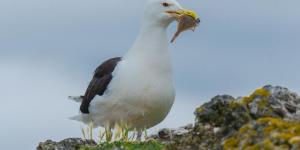
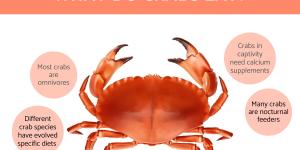

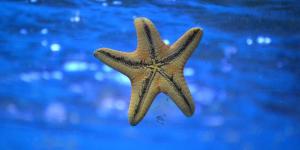

 Pls ,what can I give my snails for them to grow big.
Pls ,what can I give my snails for them to grow big.




